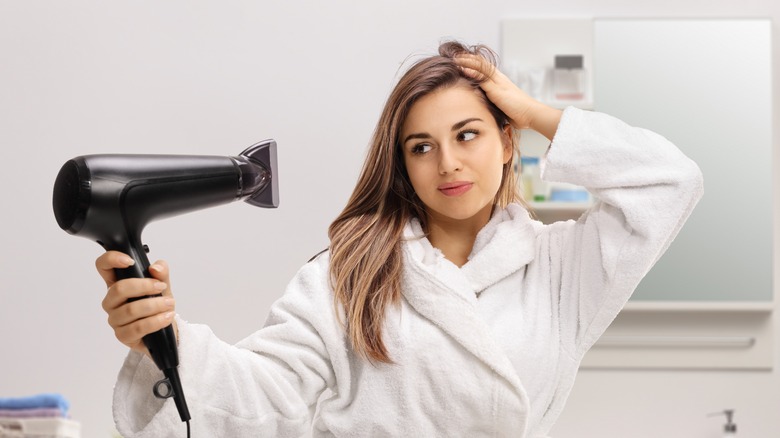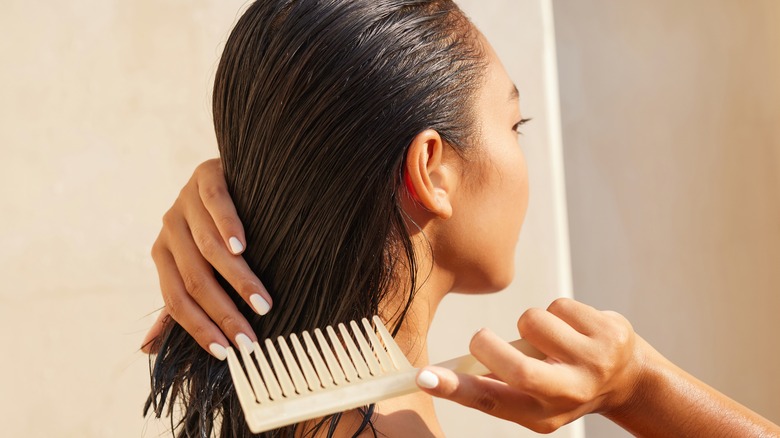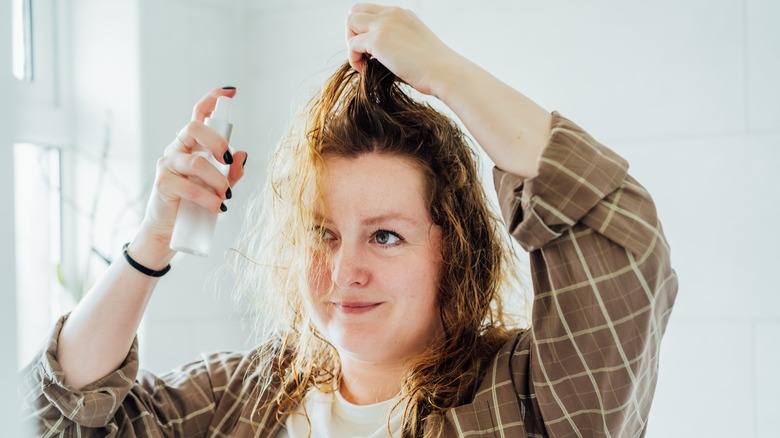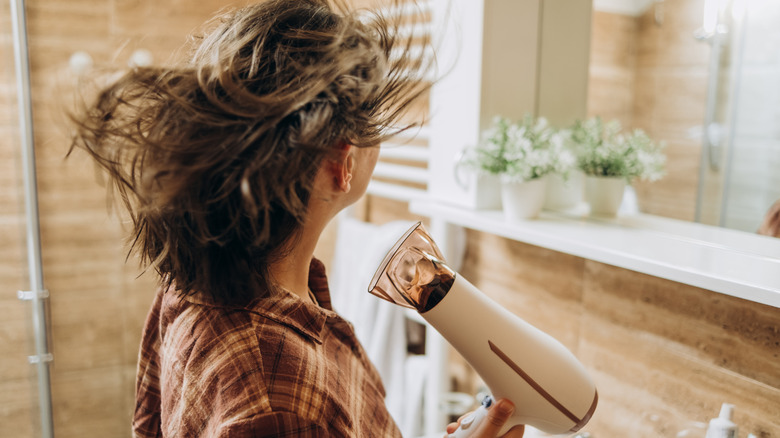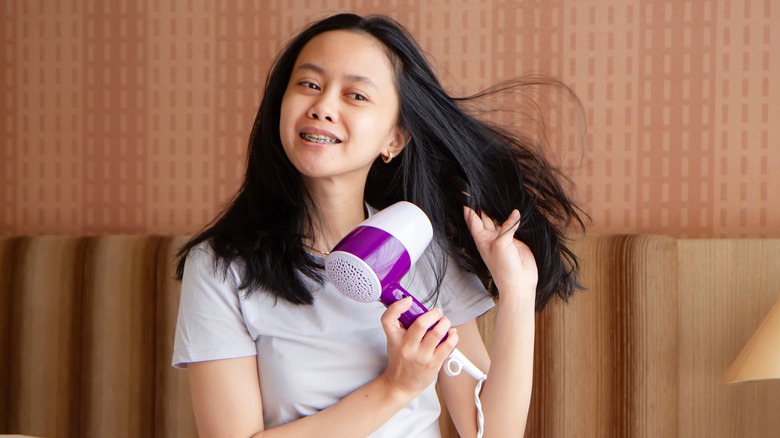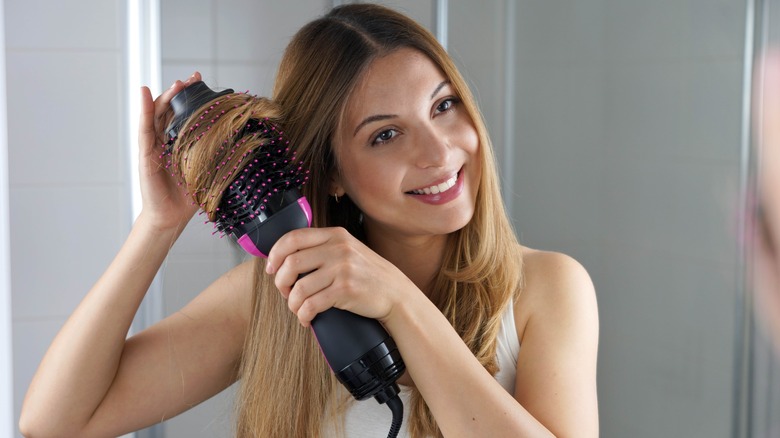Blow-Drying Mistakes That Could Be Ruining Your Hair
Giving yourself a luxurious blowout at home is the epitome of self-care. There's nothing quite like the feeling of swinging your hair around and feeling the smooth strands. And, the amazing volume after a fresh blowout is totally a great reason to whip out your phone and take a selfie. While most of us probably don't meticulously style our hair every day with a dryer and brush, making mistakes while doing so can cause damage to your strands. Even a quick everyday blast after a shower can ruin your hair if you're not careful.
Misti Barnes, trichologist, hair loss expert, and owner of Cellustrious Hair Rejuvenation, exclusively shared with Glam what not to do when blow drying your hair. If you've been experiencing split ends or frizziness, take notes because the culprit is likely your drying technique, whether that includes drying your hair when it's too wet or using too much heat. With just a few tweaks, you'll be well on your way to knowing how to blow dry your hair to perfection without all the damage.
Don't blow dry your hair when it's too wet
Many of us hop right out of the shower and start the hair-drying process right away, but expert Misti Barnes told Glam exclusively that it's best to wait until the hair is not dripping wet. After washing and conditioning your hair, grab a cotton towel or T-shirt and wrap it around your head for a few minutes to allow most of the water to absorb. Not only will it take the drying process less time, but it's also better for your hair health overall with less damaging heat on your strands. Just be sure not to rub your hair or you'll end up with frizz from the friction.
If you have the time, let your hair air dry for a bit before giving yourself an at-home blowout. However, don't wait too long either for it to completely dry or it'll be hard to style and shape. Waiting for your hair to lose at least 50% moisture before grabbing your dryer and brush is a great strategy.
Not using a heat protectant is a huge mistake
When your hair is sufficiently dry, you may go straight to turning on your blow dryer. However, hair loss expert Misti Barnes revealed in an exclusive interview with Glam that using a heat protectant is one vital step that you shouldn't skip. "Applying a heat protectant helps form a protective layer around the strands, preventing harm to the cuticles," she told us. Without the solution, your hair will be exposed to high heat, which will in turn cause damage to the shafts.
Yes, applying a heat protectant is yet another step in the getting-ready process, but they usually come in a spray formula so a few quick spritzes won't take up too much time. Afterwards, make sure the product is evenly distributed by running a wide-tooth comb through your hair. The bonus of using heat protectants is that along with providing a barrier from the heat of the blow dryer, many of them also have ingredients that fight frizz and make your hair shinier.
You'll regret drying your hair with too-high heat
The whole point of using a blow dryer is to allow the heat to dry our hair but Misti Barnes warned against having the setting too high. "It's not only harmful to the hair strands, it can damage the scalp and make scalp inflammation worse," she told Glam exclusively. "If you have to use heat, alternate between heat and cool during the drying process."
While drying your hair, try to use the lowest heat setting possible. The process may take longer but you'll prevent damage to the cuticles. Be sure that the dryer isn't aimed at one area for an extended period of time or it'll get overloaded with heat, so always keep it in motion. You'll want to hold your dryer a few inches away from your strands so that it's not directly in the line of the hot air. Finally, when you're done styling your hair, give it a run-through with cold air to smooth the cuticles for a shiny finish.
Overdrying your hair is a rookie error
We get that you want to give yourself the perfect blowout, but too much styling can pose a problem for your hair health. Because heat is damaging to your strands, you want to limit how much exposure they get. Trichologist Misti Barnes shared with Glam exclusively, "[Overdrying] can cause split ends and damage fragile hair. Stop blowing when hair is 'just dry.'" If you have short hair, a blow dry should take 10 minutes max, and those with longer hair can expect to spend about 20 minutes from start to finish. Any longer than that and you're exposing your strands to unnecessary heat.
Blow drying your hair too often can also cause undue wear and tear. Try not to give yourself a blowout every day, as much as you want to look freshly done. Instead, aim for about three to five times a week to give your tresses a break from the heat. If you need a touch-up, use a dry shampoo or try these hairstyles that will hide the fact that you desperately need a wash day.
Be careful of using the wrong brush
Having the correct tools is crucial for getting the right blowout while preserving the health of your hair. Don't ruin your mane by using a brush that's all wrong for the job. According to hair pro Misti Barnes, you'll want one with bristles made out of boar or bamboo, and they should be vented to allow the air to flow freely. She explained to Glam exclusively that these types of brushes "glide and promote natural oils, which make hair healthier and softer." The one type of brush or comb you'll want to steer clear of is plastic, as it'll cause static in your hair, Barnes advised us. Natural materials are better for your scalp, and that's where healthy hair starts.
The size of the brush matters as well. For an over-the-top blowout with extreme volume, you'll want a large round brush, while smaller ones help create tighter curls and waves. Remember, just be sure that they're all-natural as those will be much gentler on your hair than synthetic versions.
